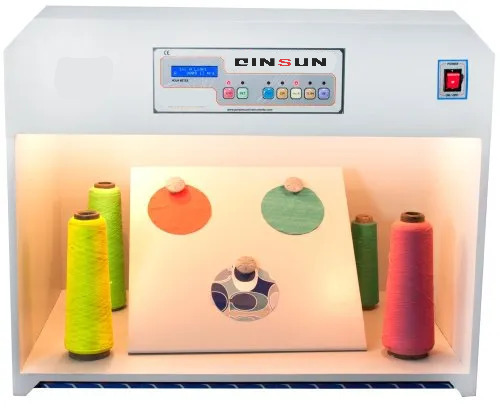
NewsInformation Center
What are the light sources used in color matching cabinet?
2023/06/16
Color matching cabinets, also known as lightboxes or color viewing booths, are used to evaluate colors under standardized lighting conditions. These cabinets are commonly used in industries such as printing, textiles, and automotive to ensure color consistency across different batches of products. To achieve accurate and consistent color matching, color matching cabinets are equipped with specific light sources. Here are the most common light sources used in color matching cabinets:


1. D65: D65 is a daylight simulator and the most commonly used light source in color matching cabinets. It has a color temperature of 6500 Kelvin and a high Color Rendering Index (CRI) of 95 or above. This light source is designed to simulate natural daylight, which is important for evaluating colors that will be viewed in outdoor environments.
2. TL84: TL84 is a fluorescent light source with a color temperature of 4000 Kelvin and a CRI of 85. This light source is commonly used in Europe and Asia for evaluating colors under commercial and retail lighting conditions.
3. F/A: F/A stands for "cool white fluorescent" and has a color temperature of 4100 Kelvin and a CRI of 80. This light source is commonly used in North America for evaluating colors under commercial and retail lighting conditions.
4. UV: Ultraviolet (UV) light is used to simulate the effects of sunlight on materials. UV light is important for evaluating colors that will be exposed to sunlight, such as outdoor fabrics, plastics, and automotive paint.
5. CWF: CWF stands for "cool white fluorescent" and has a color temperature of 4150 Kelvin and a CRI of 62. This light source is commonly used in North America for evaluating colors under office and manufacturing lighting conditions.
6. A: A stands for "incandescent" and has a color temperature of 2856 Kelvin and a CRI of 99. This light source is designed to simulate the warm, yellowish light of traditional incandescent bulbs.
7. LED: Light Emitting Diode (LED) light sources are becoming increasingly popular in color matching cabinets due to their energy efficiency and long lifespan. LED light sources can be designed to simulate a variety of lighting conditions, including natural daylight, fluorescent lighting, and incandescent lighting.
It's important to note that different industries and applications may require different light sources or combinations of light sources. Color matching cabinets can be customized to meet the specific needs of each application. By using standardized lighting conditions, color matching cabinets can help ensure accurate and consistent color evaluation, which is essential for maintaining color consistency and quality in the production process.
Previous: How to adjust the ozone concentration in the ozone aging test chamber?
N e x t : What equipment is used in zipper test?



